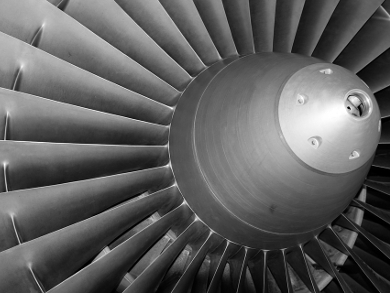According to a recent news item, a fatal small-plane crash could have been prevented if the pilot had activated his deicing system sooner. Metal Joule heater wing deicers are effective, but heavy. Most polymers are insulators, which prevents them from being used as a lightweight, flexible alternative.
James Tour of Rice University, Houston, TX, USA, and colleagues found a way around this using a conductive composite of graphene nanoribbon stacks in an epoxy matrix. A voltage applied across the composite produces Joule heating at a power density of 0.5 W/square cm. Less than 5 % graphene in the polymer matrix can provide a percolative network because of the ribbons’ high aspect ratio.
The researchers attached a strip of their composite between a helicopter rotor blade and the nickel abrasion shield that fits over the blade’s leading edge. In a lab setup at minus 20 °C, the composite became hot enough to remove an ice monolith 1 cm thick from a static blade in 15 minutes (the ice would have blown off immediately from a spinning blade). This composite could be used to deice aircraft, wind turbines, or power lines, and the graphene stacks could be incorporated into paints or coatings.
- Composites of Graphene Nanoribbon Stacks and Epoxy for Joule Heating and Deicing of Surfaces,
Abdul-Rahman O. Raji, Tanvi Varadhachary, Kewang Nan, Tuo Wang, Jian Lin, Yongsung Ji, Bostjan Genorio, Yu Zhu, Carter Kittrell, James M. Tour,
ACS Appl. Mater. Interfaces 2016.
DOI: 10.1021/acsami.5b11131




